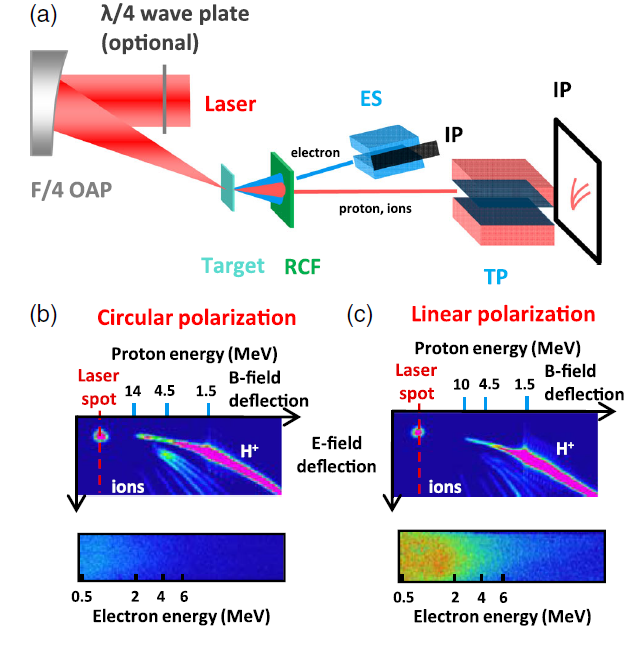Laser-driven ion acceleration is attracting widespread interest because of the prospects of realizing compact and affordable ion sources for many exciting applications. Many of these applications require highenergy ion beams with narrow energy spread as well as high flux. Up until now, the relatively well-understood mechanism of laser-driven ion acceleration is target normal sheath acceleration (TNSA), which typically produces broad exponential energy spectra with a maximum proton energy of 85 MeV.
A research team led by Prof. Zhizhan Xu and Prof. Ruxin Li at State Key Laboratory of High Field Laser Physics, Shanghai Institute of Optics and Fine Mechanics, Chinese Academy of Sciences, present experimental studies on ion acceleration using an 800-nm circularly polarized laser pulse with a peak intensity of 6.9 × 1019 W=cm2 interacting with an overdense plasma that is produced by a laser prepulse ionizing an initially ultrathin plastic foil. The proton spectra exhibit spectral peaks at energies up to 9MeVwith energy spreads of 30% and fluxes as high as 3 × 1012 protons/MeV/sr. Two-dimensional particle-in-cell simulations reveal that collisionless shocks are efficiently launched by circularly polarized lasers in exploded plasmas, resulting in the acceleration of quasimonoenergetic proton beams.
Furthermore, this scheme predicts the generation of quasimonoenergetic proton beams with peak energies of approximately 150 MeV using current laser technology, representing a significant step toward applications such as proton therapy.
The finding was published in Phys. Rev. Lett.
(https://journals.aps.org/prl/abstract/10.1103/PhysRevLett.119.164801)

FIG. (a) Schematic of the experimental setup. Image plate data of Thomson parabola and electron spectrometer obtained from 40-nm plastic foils irradiated by (b) CP and (c) LP laser pulses with a peak intensity of 6.9 × 1019 W=cm2.